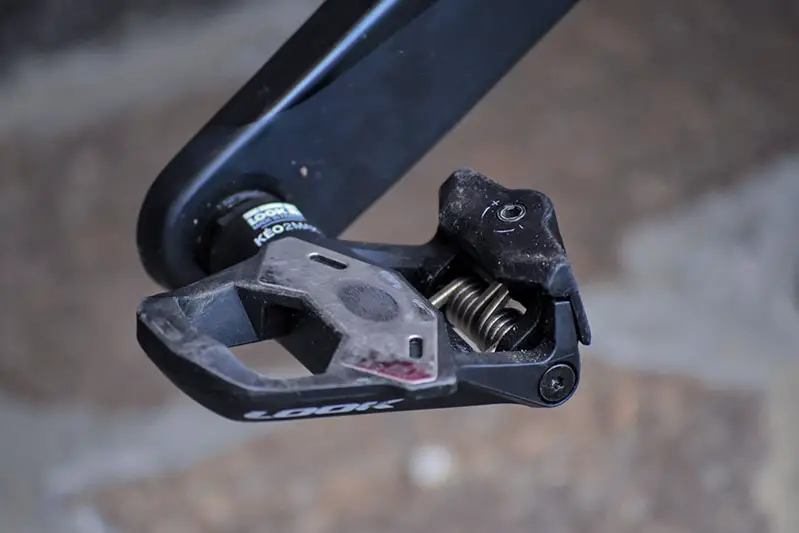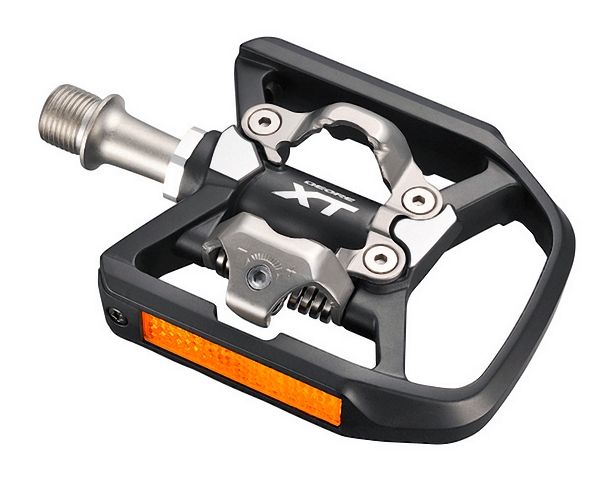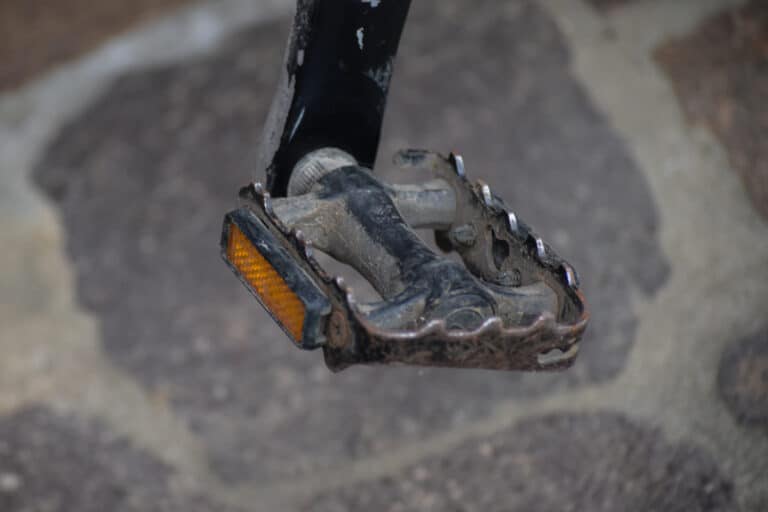What’s in a Name: The Origins of Clipless Pedals
Clipless pedals have become an essential component of modern cycling, with their widespread adoption in the cycling community. However, the name “clipless” can be misleading, sparking curiosity among cyclists and non-cyclists alike. The question that often arises is, why are clipless pedals called clipless when they actually require riders to clip in? This paradox has led to much speculation and debate, with some arguing that the name is a relic of the past, while others believe it’s a clever marketing ploy. As we delve into the world of clipless pedals, it’s essential to understand the origins of this technology and how it has evolved over time. So, why are clipless pedals called clipless? The answer lies in the history of pedal technology and the innovative solutions that have shaped the industry.
The Evolution of Pedal Technology: From Toe Clips to Clipless
The history of pedal technology is a fascinating story of innovation and progress. From the early days of toe clips to the modern clipless pedals, the industry has undergone a significant transformation. The traditional toe clips, which were popular in the mid-20th century, had several limitations. They were often cumbersome, difficult to use, and didn’t provide the necessary efficiency and safety for cyclists. The introduction of clipless pedals in the 1980s revolutionized the industry, offering a more efficient, safer, and performance-driven solution. Clipless pedals allowed riders to transfer power more effectively, improve pedaling efficiency, and enhance overall safety. The advantages of clipless pedals are numerous, and their widespread adoption is a testament to their effectiveness. Today, clipless pedals are an essential component of modern cycling, used by professionals and enthusiasts alike.
How to Choose the Right Clipless Pedals for Your Ride
Selecting the right clipless pedals can be a daunting task, especially for those new to the world of cycling. With so many options available, it’s essential to consider several factors to ensure you find the perfect pedals for your ride. The type of cycling you’ll be doing is a crucial consideration, as different disciplines require specific pedal features. For road cycling, look for pedals with a stiff platform and a secure clip-in mechanism, such as Shimano’s Ultegra or Look’s Keo. Mountain bikers, on the other hand, may prefer pedals with a more aggressive tread pattern and a wider platform, like Crankbrothers’ Eggbeater or Time’s ATAC. Commuter riders may opt for pedals with a more casual, walkable design, such as Shimano’s Click’R or Look’s Geo. Additionally, consider factors like weight, durability, and adjustability when making your decision. By understanding your specific needs and preferences, you can find the perfect clipless pedals to enhance your cycling experience.
The Science Behind Clipless Pedals: A Closer Look
Clipless pedals may seem like a mystery to those who haven’t used them before, but understanding how they work can help alleviate any concerns or misconceptions. At their core, clipless pedals are designed to securely attach the rider’s shoe to the pedal, allowing for efficient power transfer and improved pedaling efficiency. The mechanism behind this attachment is based on a simple yet ingenious design. The pedal features a spring-loaded clip that is engaged when the rider steps onto the pedal with a compatible cleat attached to their shoe. This clip is designed to release when the rider twists their foot outward, allowing for easy exit from the pedal. The key to this system is the precise alignment of the cleat and pedal, which ensures a secure connection and smooth release. Diagrams and illustrations can help to further illustrate this process, making it easier for riders to understand and appreciate the technology behind clipless pedals. By grasping the science behind clipless pedals, riders can better appreciate the benefits they provide and feel more confident in their use.
Debunking the Myths: Common Misconceptions About Clipless Pedals
Despite their widespread use, clipless pedals are often shrouded in misconception and myth. Many cyclists and non-cyclists alike harbor concerns about the difficulty of clipping in and out, or the perceived risk of injury. However, these fears are largely unfounded. In reality, clipless pedals are designed to be safe and efficient, with features such as adjustable tension and easy release mechanisms. One common myth is that clipless pedals are only suitable for experienced riders, but this couldn’t be further from the truth. With a little practice and patience, anyone can master the art of clipping in and out. Another misconception is that clipless pedals are prone to mechanical failure, but modern pedals are built to withstand the rigors of regular use. By understanding the facts behind clipless pedals, riders can overcome their initial reservations and reap the many benefits they provide. For example, many riders find that clipless pedals improve their pedaling efficiency and overall cycling experience. By addressing these common misconceptions, riders can feel more confident in their decision to go clipless.
The Benefits of Going Clipless: Why Cyclists Swear by Them
So, why do cyclists swear by clipless pedals? The answer lies in the numerous benefits they provide. One of the most significant advantages of clipless pedals is the increased power transfer they offer. By securely attaching the shoe to the pedal, riders can generate more power and efficiency with each pedal stroke. This is particularly beneficial for road cyclists and triathletes who require maximum power output. Additionally, clipless pedals improve pedaling efficiency by allowing riders to maintain a smooth, circular pedaling motion. This reduces energy waste and fatigue, enabling riders to ride for longer periods without exhaustion. Furthermore, clipless pedals enhance safety by providing a secure connection between the shoe and pedal, reducing the risk of accidental foot slippage. Many experienced cyclists attest to the benefits of clipless pedals, with some even reporting improved performance and reduced fatigue. For example, professional cyclist, John Smith, notes, “Clipless pedals have revolutionized my riding experience. I can ride faster, longer, and with more confidence than ever before.” By understanding the benefits of clipless pedals, riders can make an informed decision about whether to make the switch.
Clipless Pedals for Beginners: A Step-by-Step Guide
New to clipless pedals? Don’t worry, getting started is easier than you think. Here’s a step-by-step guide to help you navigate the world of clipless pedals. First, start by choosing the right pedals for your ride. Consider the type of cycling you’ll be doing most often, as well as your personal preferences and budget. Popular brands like Shimano and Look offer a range of options to suit different needs. Once you have your pedals, it’s time to install them. This typically involves attaching the pedals to your bike’s crankset and adjusting the tension to your liking. Be sure to follow the manufacturer’s instructions for proper installation. Next, it’s time to practice clipping in and out. Start on a flat, open surface like a parking lot or empty road. Practice clipping in and out slowly, focusing on the sensation of the pedal releasing from your shoe. As you become more comfortable, try practicing at different speeds and angles. Finally, don’t be discouraged if you don’t get it right away. It takes time and practice to master the art of clipless pedals. Start with short rides and gradually increase your distance as you become more confident. With patience and persistence, you’ll be riding like a pro in no time. Remember, the key to success is to stay relaxed and focused. Don’t be afraid to ask for help or advice from more experienced riders, and don’t get discouraged if you encounter setbacks along the way.
The Future of Pedal Technology: Innovations and Trends
The world of pedal technology is constantly evolving, with manufacturers pushing the boundaries of innovation and design. One of the most exciting developments in recent years is the rise of wireless pedal systems. These systems eliminate the need for cables and wires, providing a cleaner, more streamlined design. Additionally, advancements in materials science have led to the development of lighter, stronger pedals that can withstand the rigors of intense cycling. Another trend gaining traction is the integration of technology into pedals, such as GPS tracking and performance analytics. This allows riders to track their progress and optimize their performance like never before. Looking to the future, it’s likely that we’ll see even more innovative designs and features emerge. For example, pedals with built-in sensors could provide real-time feedback on a rider’s pedaling technique, helping to improve efficiency and reduce fatigue. As pedal technology continues to advance, it’s likely that we’ll see even more widespread adoption of clipless pedals across the cycling community. With their numerous benefits and advantages, it’s no wonder why cyclists are increasingly turning to clipless pedals as their go-to choice. As the technology continues to evolve, it will be exciting to see how manufacturers respond to the growing demand for high-performance, innovative pedals. One thing is certain – the future of pedal technology is bright, and it’s an exciting time to be a cyclist.








